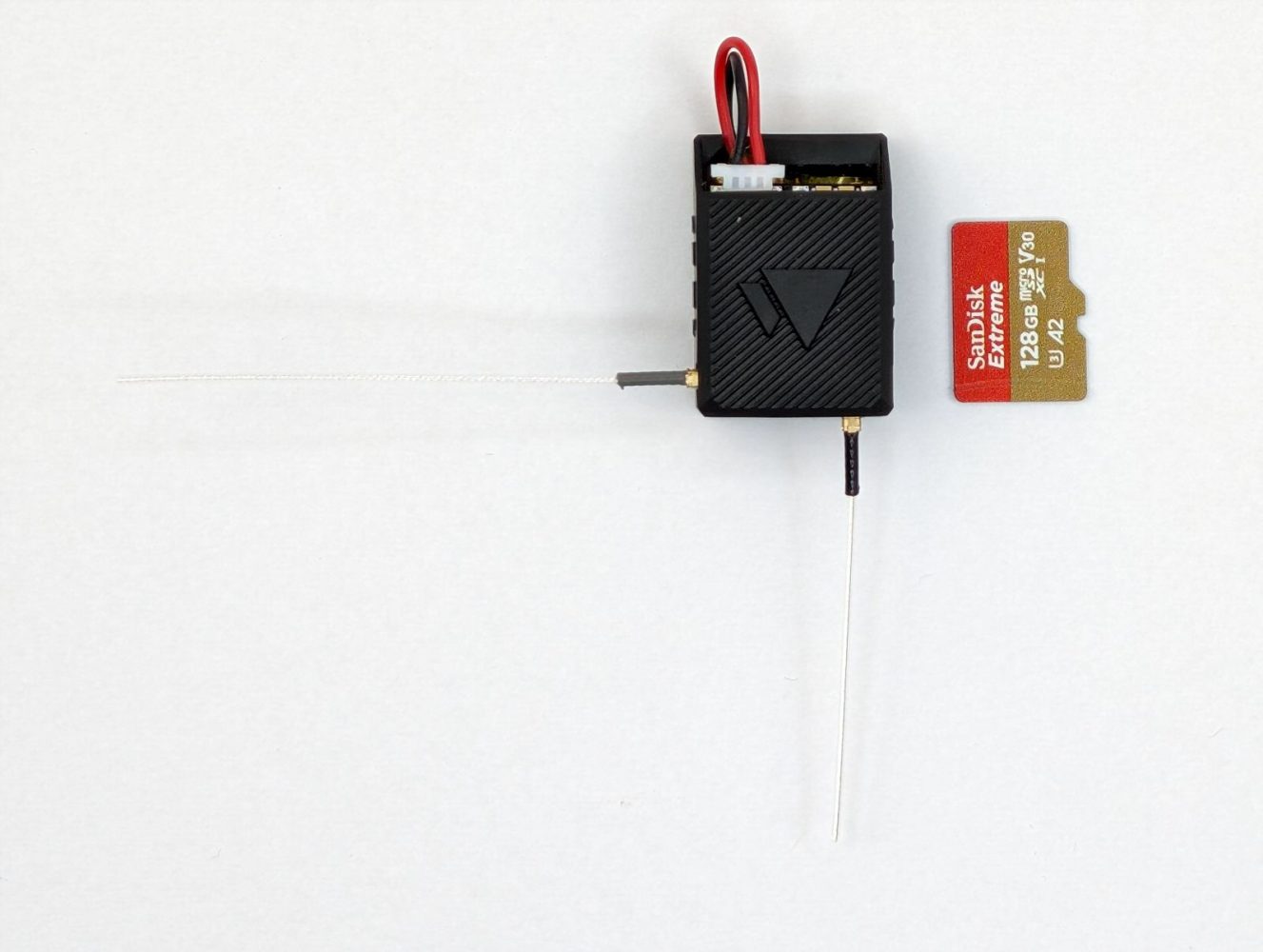
With the FAA’s March 16 drone Remote ID enforcement deadline fast approaching, Czech startup Dronetag has unveiled the next generation of its Remote ID module for FPV pilots, aeromodelers, and recreational drone pilots. Dronetag BS Gen 2 is a standalone, battery-powered solution that weighs just 5 grams.
Remote ID, as you likely know, is a feature that enables a drone in flight to provide its identification and location information to other parties. The FAA likens it to a “digital license plate” for a drone. Most drones operating in the US airspace are required by law to have this capability because federal agencies need a mechanism to locate the operator when a drone appears to be flying in an unsafe manner or where it is not allowed to fly.
Related: Drone Remote ID enforcement delay is ‘discretionary’: What does that mean?
The Dronetag BS Gen 2 module is priced at $99 and comes in a package that includes its enclosure, battery, charger, and antennas. It is easily the lightest drone Remote ID solution on the market and can be powered by a small LiPo battery (up to 17V input).
In addition to the FAA’s guidelines, the module complies with Remote ID rules set by the European Union Aviation Safety Agency (EASA) as well. However, Dronetag CEO Lukáš Brchl is quick to point out that making drones compliant is not the company’s sole focus.
“In developing the second generation of Dronetag BS, we delved deep into the perspectives and desires of drone enthusiasts and hobby pilots globally. Through extensive forum research, active discussions, and social media monitoring, we gained invaluable insights into the true needs of the drone community. This wealth of knowledge has been transformed into a hardware component that redefines the technological landscape of the Remote ID market,” says Brchl.
For commercial drone users, Dronetag offers a more premium and robust module called the Beacon. That solution is more feature-rich, comes with more convenient mounting and dismounting options, and boasts a much longer battery life with its own dedicated USB-C port for charging.
As Brchl says, “Beacon is for professional pilots who want a solution that simply works in all cases. On the other hand, the BS combo is for recreational pilots who mainly care about the price and are willing to sacrifice some level of user convenience for a cheaper alternative.”
Read more: DJI releases new Action 2 camera bundles with 4x storage
FTC: We use income earning auto affiliate links. More.





Comments